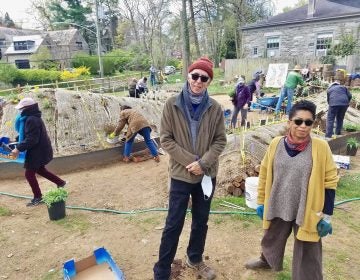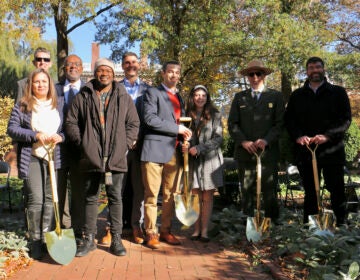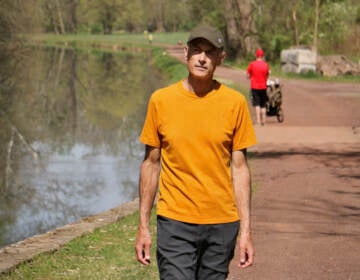New museum for America and the Bible opens at Independence Mall
The Faith and Liberty Discovery Center in Philadelphia uses cutting-edge technology to tell the story of America’s relationship to religion.
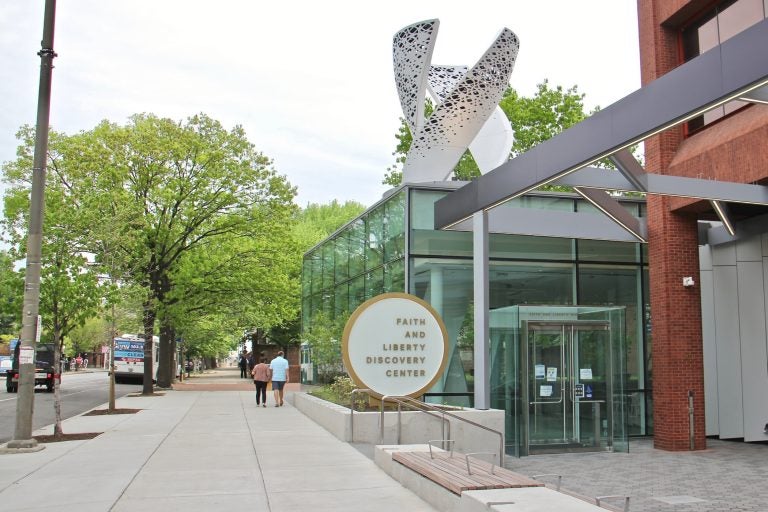
The Beacon at the Faith and Liberty Discovery Center starts in the lobby and continues through the roof. (Emma Lee/WHYY)
When the American Bible Society first planned, about six years ago, to put its Faith and Liberty Discovery Center at 5th and Market Streets, it realized what it meant to be located across the street from Independence Mall. The new museum about the religious roots of the nation triangulates itself in relation to the founding documents of American democracy.
In the lobby, a sculpture of three pillars spiraling around themselves extends from floor to ceiling, and beyond, pushing through the roof to become a literal beacon of light atop the building. The three pillars are “Liberty,” facing the direction of the Declaration of Independence in Independence Hall; “Justice,” facing the direction of the U.S. Constitution at the Constitution Center; and “Faith,” facing the Bible at the entrance to the Center’s own galleries.

The Center positions the Bible among those founding documents of America.
“These three documents coming together help to create a moral grammar for our country,” said the Center’s executive director Patrick Murdock. “There’s an important part of the American story there. It’s not the whole story. This is a complicated story.”
The story told throughout the Center’s six, technologically sophisticated galleries begins and ends with William Penn, the Quaker who fled religious persecution in England. He arrived in Leni Lenape native land, what is now Philadelphia, with the revolutionary idea that government should not dictate how its citizens can worship.
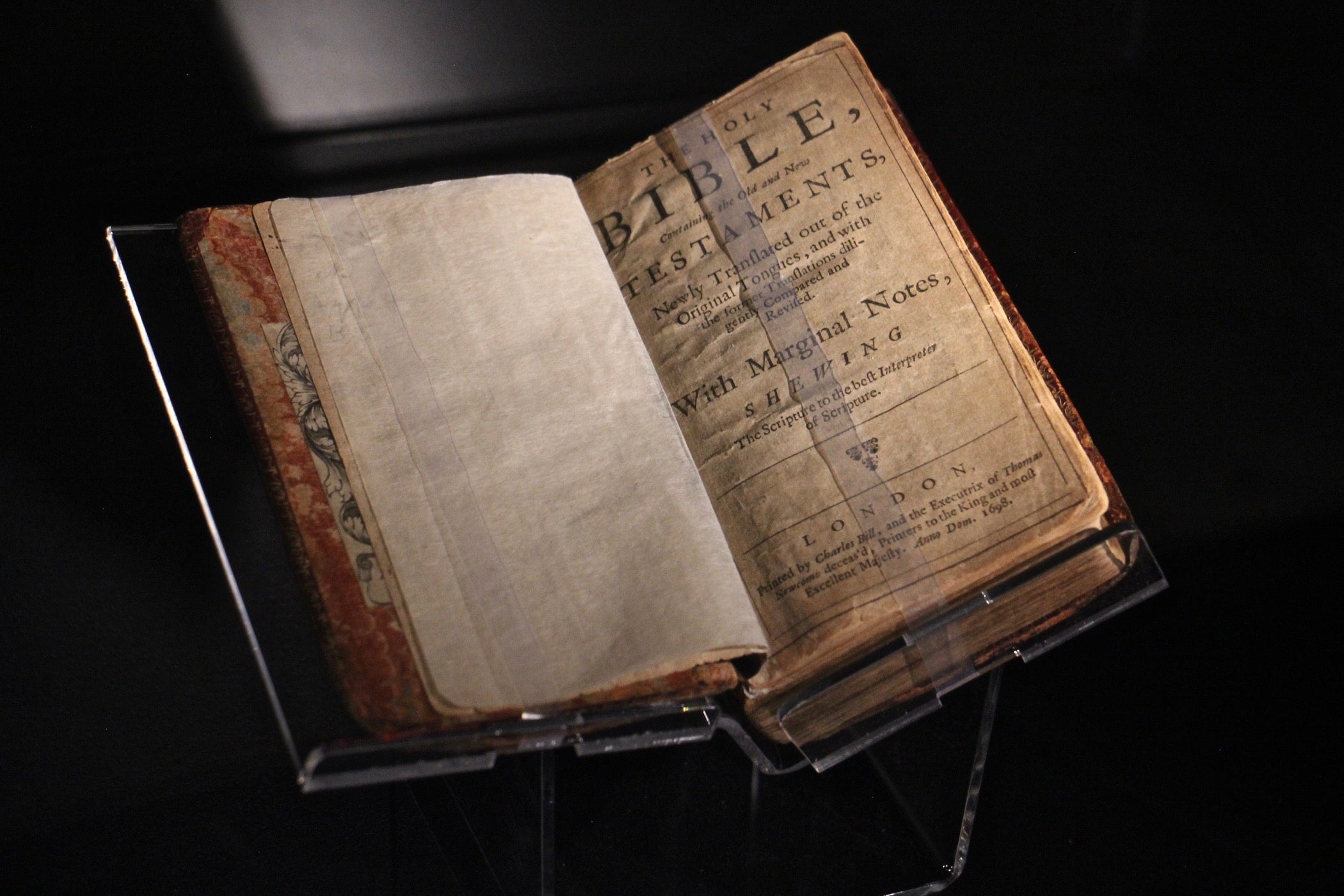
Part of the exhibition features Penn’s personal Bible, but the thrust of the museum experience is interacting with technology, rather than with artifacts. The “Liberty” gallery is a forest of 22 large touchscreens, allowing visitors to scroll through the lives of 22 “changemakers” – people who professed strong ties to their religious faith and had a significant impact on American history.
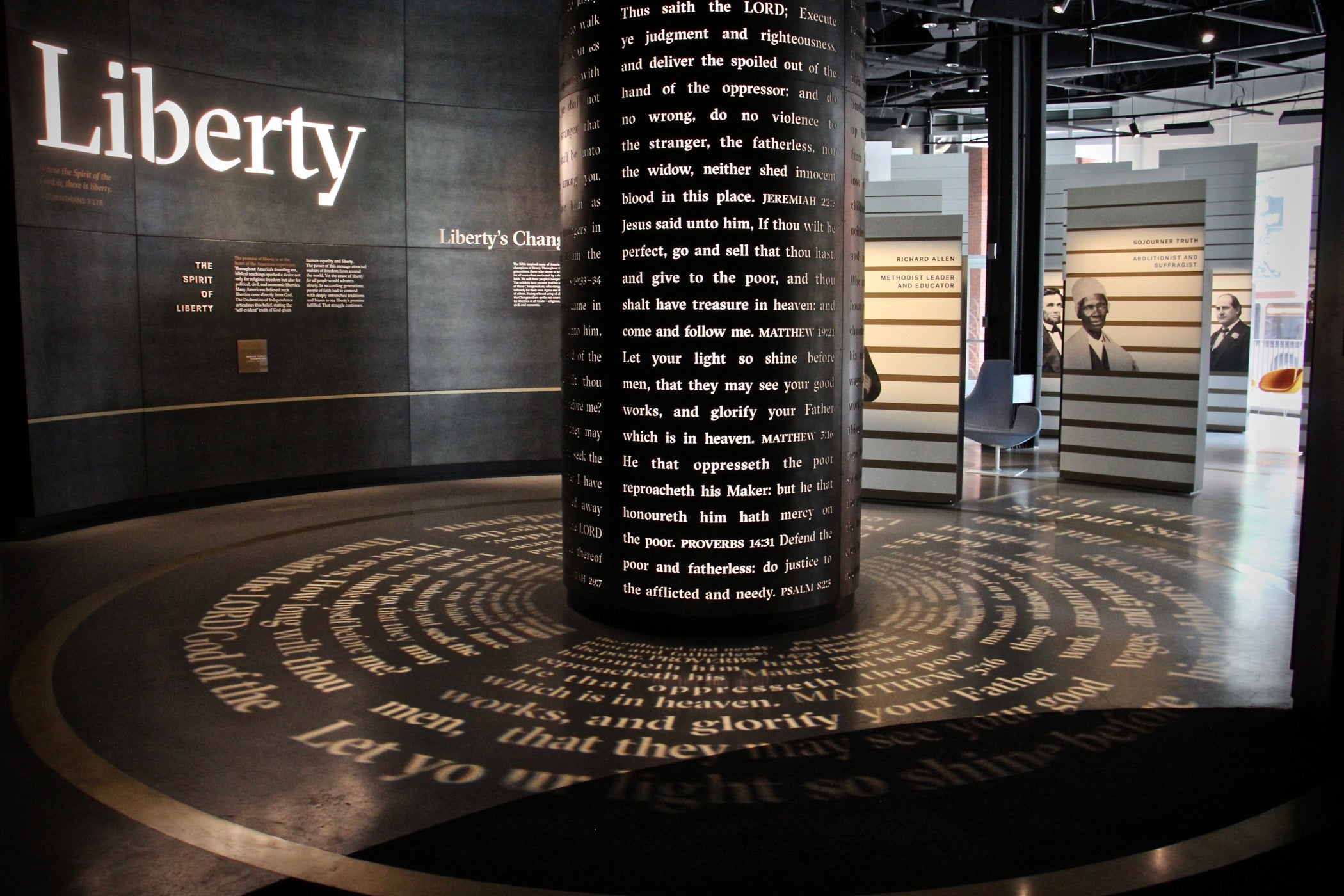
The list includes Sojourner Truth, the abolitionist and Black women’s rights advocate; social worker Jane Addams; labor leader César Chávez; Jewish educator and philanthropist Rebecca Gratz; James Cash Penney, founder of the JCPenney retail franchise who became a born-again Christian in his 50s; and the Beecher family, five generations of politicians, writers, and Presbyterian clergy.
The six galleries are organized by concept: faith, liberty, justice, hope, unity and love. In the Justice gallery visitors can parse a speech by Martin Luther King, Jr., for his references to the Biblical story of the Israelites’ exodus from Egypt as a metaphor for the Civil Rights movement. In another speech, President Barack Obama references the Biblical story of the Good Samaritan.
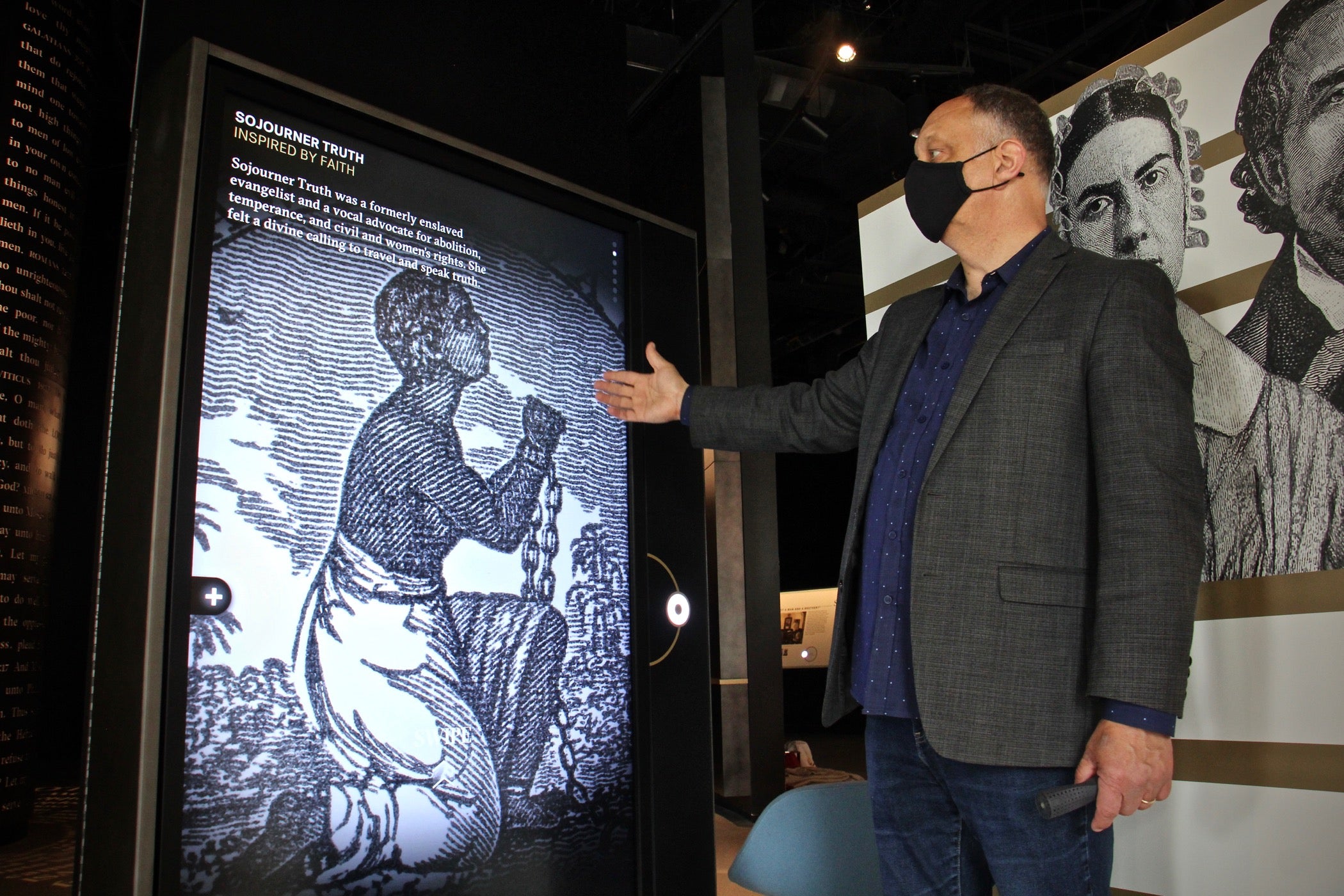
Visitors to the center are issued an electronic wand, with which they can interact with the exhibits. If they encounter a story or exhibit of particular interest, visitors can touch the wand to the display and it remembers the selection. At the end of the museum experience, which typically takes 75-90 minutes, the visitor returns the wand and is given a unique passcode to a private website where all their exhibition selections can be experienced again, in more depth, via personal computer. In effect, visitors curate their own museum experience to be accessed at home, in perpetuity.
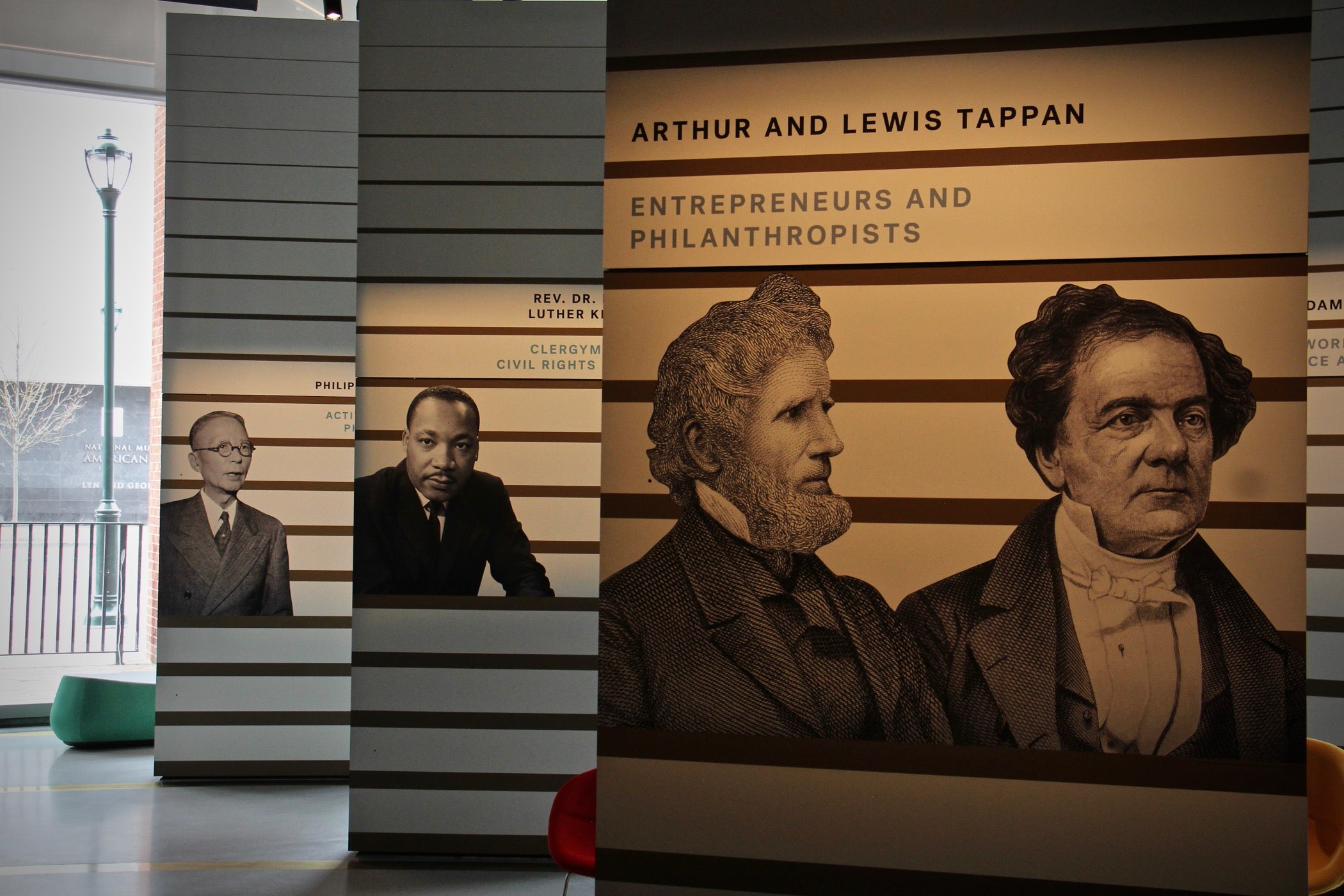
The wand can also be used for a bit of fun. The “Unity” gallery is basically a long hallway whose walls are reactive video surfaces. Here the wand becomes magical, streaming a trail of sparkles and pops across the walls as the user waves it like a wizard. Remembered stories and exhibits that were selected in previous galleries emerge on the walls, like memories. When several people are in the hallway at once, similar selected memories will connect. Hence the gallery name, Unity.

The exhibition technology was designed by Local Projects, a New York-based firm recognized internationally for re-imagining the museum experience in the digital age.
“Some people are saying that this may be the most technologically advanced museum in the world,” said Murdock, adding with a chuckle. “If we can hold that distinction for 35 minutes, we’ll take it.”
Murdock has geared the Faith and Liberty Discovery Center to the visiting tourist who comes to Philadelphia to see American history. He says visitors who come for the major draws of the Liberty Bell and Independence Hall often are not aware of other attractions within walking distance.

The Center created a mobile app of walking trails that guide visitors to such places as the Museum of the American Revolution on Chestnut Street, the National Museum of American Jewish History on Market Street, the African American Museum Philadelphia on Arch Street, and the Free Quaker Meeting House on Arch Street.
In the midst of so much cultural tourism, the Center fills what University of Pennsylvania chaplain Chaz Howard calls a “missing conversation.”
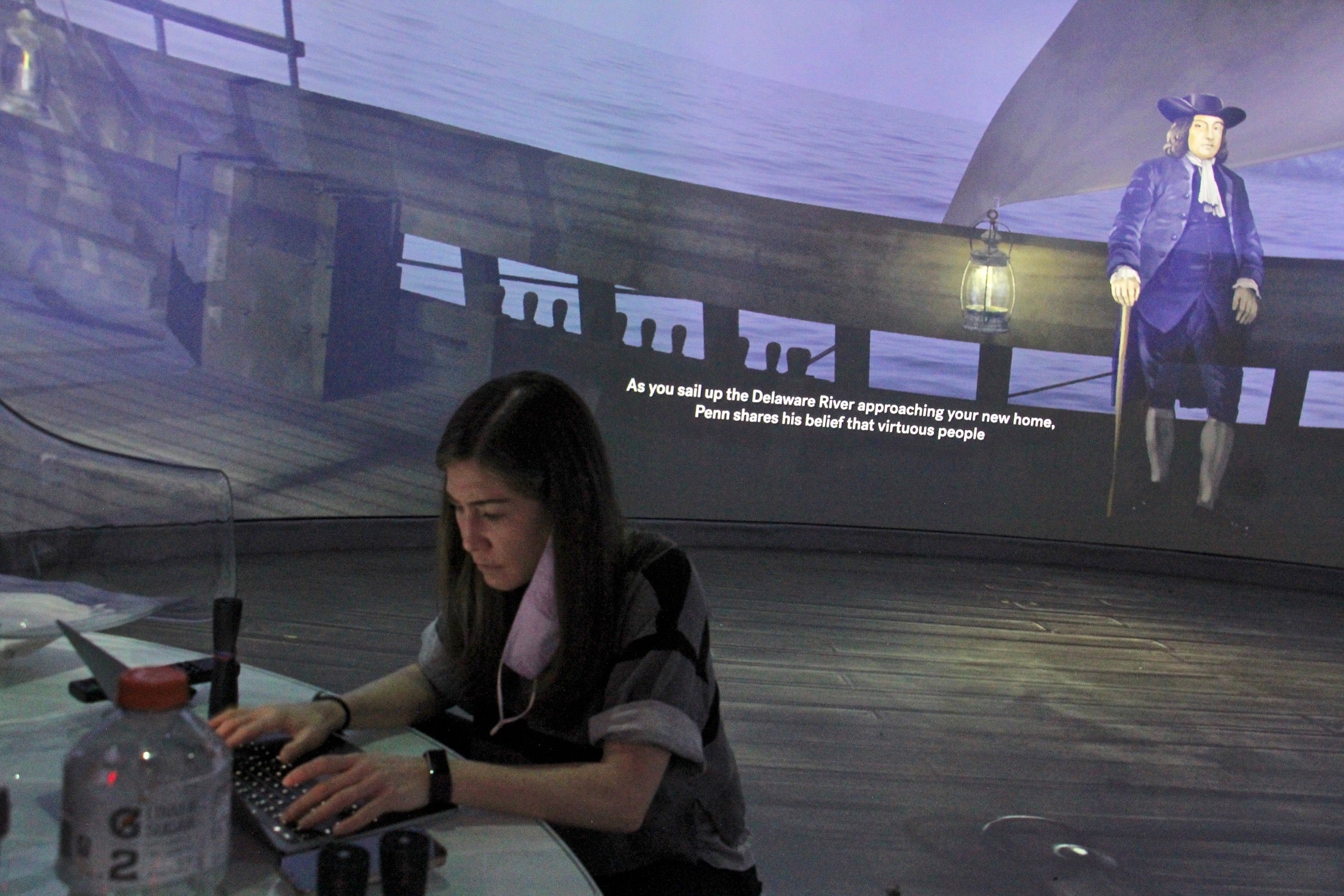
“We’re missing the conversation that has an intersection of faith and scripture, and liberty and freedom,” said Howard in a video on the Center’s website. “It’s a place to ask hard questions. It’s not an easy journey we’ve had here, and scripture hasn’t always been used kindly. It’s been used to enslave people. This is a place to engage hard questions like that.”
The opening on Saturday is a “soft” opening, to both restrict attendance to COVID-19 pandemic levels and work out any kinks in the technology. Murdock expects to have a more grand ribbon-cutting ceremony, with pomp and special invited guests, this summer.

Get daily updates from WHYY News!
WHYY is your source for fact-based, in-depth journalism and information. As a nonprofit organization, we rely on financial support from readers like you. Please give today.




